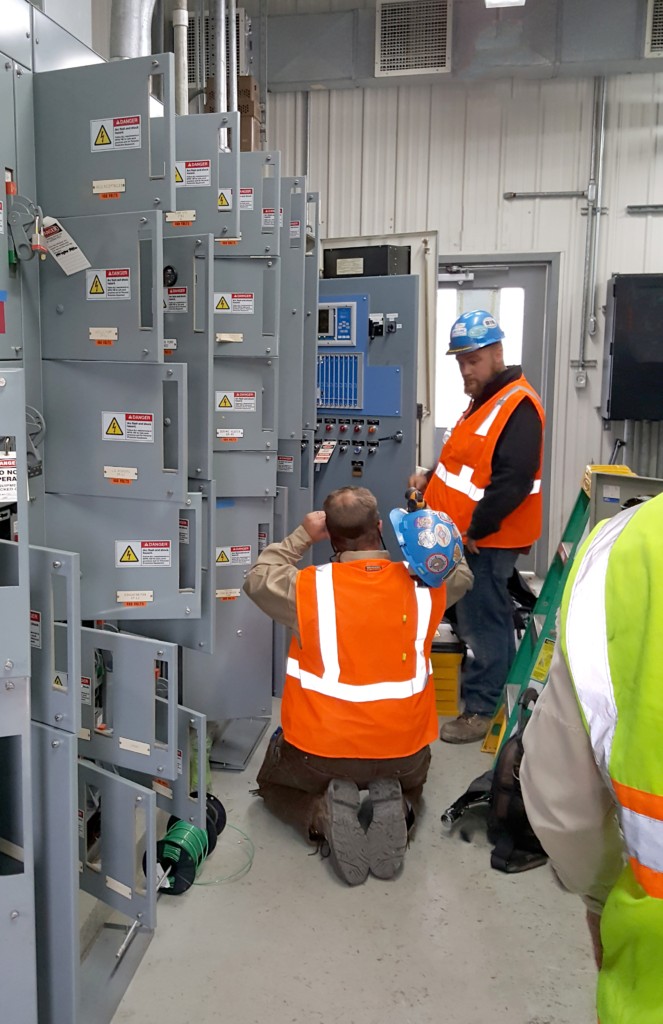By Audai Abed, Switchgear Product Line Manager
What is Arc Flash?
Electrical systems are designed for electrical current to flow through conductors. However, when this current travels through air, an arc is formed. This event is called arc flash and poses significant risk toward the safety of personnel, property, and productivity.
At 480V (the voltage that powers the majority of equipment in most facilities), arcing faults are generally 30-60% of the bolted fault currents’ values, which means they take more time to be detected and cleared by protection devices. This delay results in an exponential increase of the incident energy of the arc, making arcing faults very dangerous.
Prioritizing Safety
NESC & NFPA 70E standards require employers to perform an assessment to determine the potential exposure to an electric arc for employees who work on or near energized lines, parts, or equipment. To perform this assessment, you either need to use the applicable standard tables to determine the effective arc rating of the protective clothing, or you can perform a detailed arc flash study using computer-modeled analysis. However, when you take a closer look at the NESC/NFPA 70E tables, you will notice that a detailed arc hazard analysis is often still needed to estimate the energy levels.
Objectives and Outcomes of an Arc Flash Study
The main objectives of an arc flash study:
- Calculate the potential incident energy levels throughout the electrical distribution system
- Define the arc flash boundary
- Determine the required PPE category (as per the NESC/NFPA 70E) when working on or near the energized equipment
- Apply arc flash labels at the pertinent locations
To achieve these results, a considerable amount of calculations must be done to provide important information about the electrical network. The calculations are produced during two important studies:
- Short Circuit Analysis: Studies the existing electrical system to determine the existing fault current throughout the distribution network from the utility connection point down to the final distribution boards
- Coordination Study: Reviews protection coordination, fault discrimination, and trip times
With the results from these studies, you will be able to evaluate the performance of the protection devices. This will assist you in get recommendations for improving the electrical system performance. Additionally, you will find out where you need to implement arc flash mitigation solutions to reduce the incident energy levels at the locations with high Cal/cm2 values, or “hot spots”.
Need an Arc Flash Study? Start Here.

When hiring an expert to perform your arc flash study, have your updated one-lines ready (even if your one-lines are out-of-date). Try to highlight the differences between existing equipment and the one-lines. Having previous arc flash studies, cable schedules, and utility data ready will save time during the data collection and verification process. Additionally, you should highlight any of your facility’s emergency operating conditions since this will affect your study’s results.
Generally, the data needed to be collected to perform an arc flash study includes but is not limited to the following:
- Equipment details and location (panelboards, switchboards, MCC’s, switchgear, transformers, motors, and generators)
- Protection devices details (relays, fuses, trip units)
- Conductor details (size, insulation, material, sets per phase, and length)
- Utility data
After data collection is completed, the information will be modeled using an analysis software to get the results.
I Have Arc-resistant Switchgear, I’M SAFE!
A common misconception about the arc-resistant switchgear is the purpose of its design.
Arc-resistant switchgear is designed to contain the arc inside the switchgear and exhaust the gases that result from the arc through a plenum. This keeps the workers around the switchgear safe. However, all of this is meant to happen when the switchgear is closed. When the switchgear is open, it loses its benefit as arc-resistant! This means when someone is performing maintenance, thermal scanning, or even if the switchgear panel is missing a bolt, danger is still a factor.
Although having arc-resistant switchgear increases safety in some instances, you need to be prepared for incidents that happen when someone is working with live equipment. It’s best to identify the hot spots by performing a study. Then reducing the incident energy levels at those spots using arc flash mitigation solutions and/or proper coordination. Lastly, keep maintaining your equipment periodically in order not to miss that bolt somewhere!
Southwest Electric can cover your arc flash study needs. From there, we can provide arc flash mitigation solutions and upgrade/maintain your electrical network to comply with the safety requirements. Give us a call or an email, and we will be happy to discuss your needs.
Stay connected. Follow Southwest Electric on LinkedIn and Facebook.
